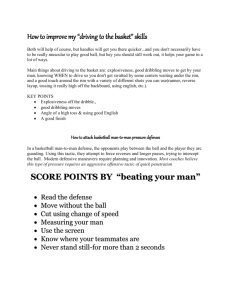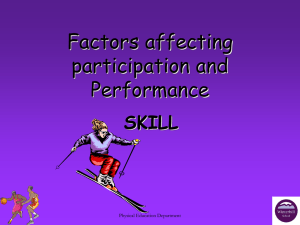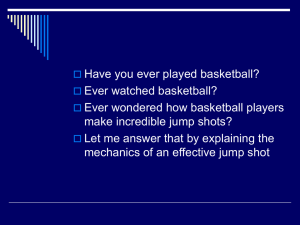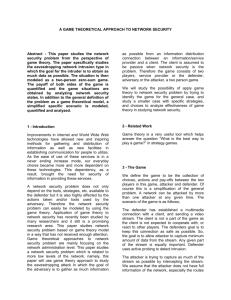4-0 dynamic attack from Alan
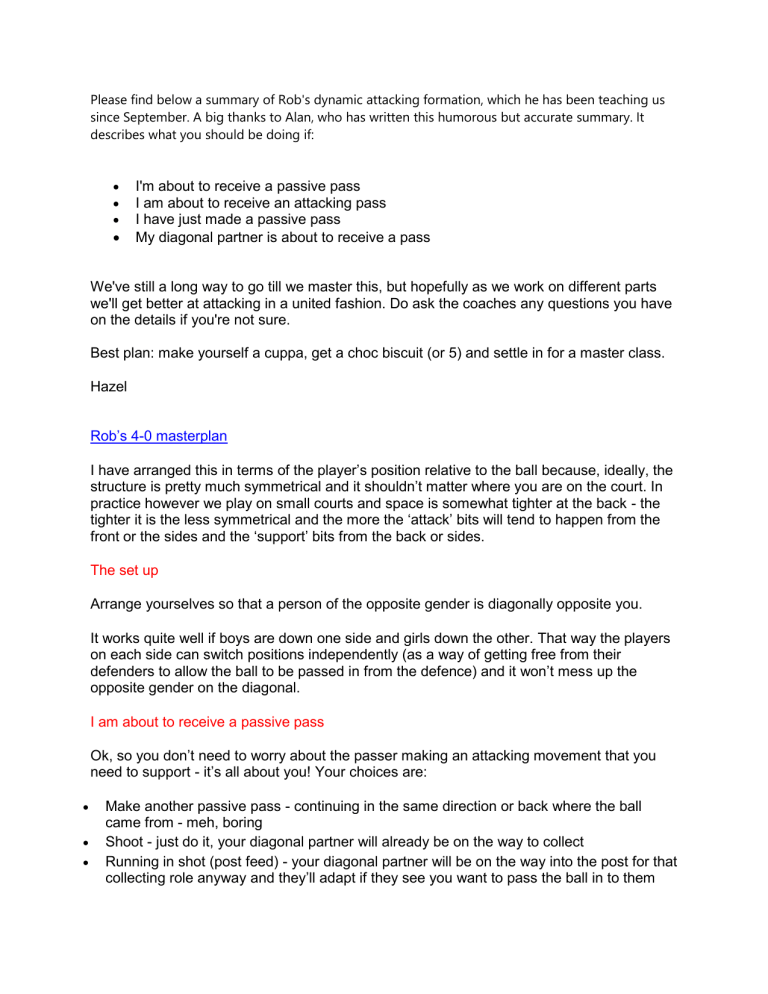
Please find below a summary of Rob's dynamic attacking formation, which he has been teaching us since September. A big thanks to Alan, who has written this humorous but accurate summary. It describes what you should be doing if:
I'm about to receive a passive pass
I am about to receive an attacking pass
I have just made a passive pass
My diagonal partner is about to receive a pass
We've still a long way to go till we master this, but hopefully as we work on different parts we'll get better at attacking in a united fashion. Do ask the coaches any questions you have on the details if you're not sure.
Best plan: make yourself a cuppa, get a choc biscuit (or 5) and settle in for a master class.
Hazel
Rob’s 4-0 masterplan
I have arranged this in terms of the player’s position relative to the ball because, ideally, the structure is pretty much symmetrical and it shouldn’t matter where you are on the court. In practice however we play on small courts and space is somewhat tighter at the back - the tighter it is the less symmetrical and the more the ‘attack’ bits will tend to happen from the front or the sides and the ‘support’ bits from the back or sides.
The set up
Arrange yourselves so that a person of the opposite gender is diagonally opposite you.
It works quite well if boys are down one side and girls down the other. That way the players on each side can switch positions independently (as a way of getting free from their defenders to allow the ball to be passed in from the defence) and it won’t mess up the opposite gender on the diagonal.
I am about to receive a passive pass
Ok, so you don’t need to worry about the passer making an attacking movement that you need to support - it’s all about you! Your choices are:
Make another passive pass - continuing in the same direction or back where the ball came from - meh, boring
Shoot - just do it, your diagonal partner will already be on the way to collect
Running in shot (post feed) - your diagonal partner will be on the way into the post for that colle cting role anyway and they’ll adapt if they see you want to pass the ball in to them
Running in shot (side feed) - Pass, Follow, In - your lumbering defender may not react quickly enough to your lightning burst of pace and your movement in the direction of your own pass creates a lane to the post. The feed for your running in shot is the person you just passed to on the outside of the court.
Short shot - Same start as above. Pass, Follow, In. Pass to a player on the outside (either direction), follow the pass, notice the defender is blocking a direct line to the post so you can’t take the running in shot and cut back so that you aim your run not at the post this time but to the side. You’ll get the ball back from the person you passed it to and be able to shoot long shot style from within a metre or two. It’s worth noting that if you don’t do enough of the ‘follow’ part then your cut back is likely to take you too far away from the post for that high percentage short shot you’re after. Other good stuff can happen but not the short shot.
We practice the movement for the last two options as part of the passing exercise warm-up
Rob does. The pass and follow all in one motion - that’s the clue to the person you’re passing to that you are making a pass with the intention of attacking rather than a mere passive pass. If you pass, pause, and follow then the ball could be long gone before anyone realises you had planned something amazing. The catch, pivot and pass that Rob demonstrates provides a technique for creating a little more space against a defender who has stayed tight. You might need that space to enable you to make the lateral pass and movement which begins the attack.
Again, with regard to the last two options, it may be that your defender does well and prevents you from taking the shot. But you still have the ball and you’re probably close to the post which means you’ve become a Feed! I know, exciting right?!? If you look up you might see the person who supported you with that pass from the outside about to steal your glory with a direct running in attempt or veering shot of their own. Gits. So look alive. We wouldn’t want to mess that up for them would we? Grrr.
I am about to receive an attacking pass
You know the passer is doing something attacking because they passed the ball and ran towards you all in one motion.
Weeeelllll, you do have the ball now, and you are an attacker so you could take a long shot or running in shot if there’s one on but our best chance of scoring is probably going to be to pass the ball back to the person who gave you the attacking pass as they make their run at or to the side of the post. And isn’t it convenient when the best way to score coincides with the best way not to hack off your team mate? Result!
If you can make the pass back to them great but, like all passes, measure reward against risk. It might be a great chance for a goal but if the pass is pretty much impossible then the best play may be to decide not to make it.
If you do make the pass and the attacker catches it but is unable to take the shot then now the play is on you. They’ll be expecting you to look for a scoring chance of your own. You should be moving in with the pass as you make it just in case - don’t wait to see if they need you, assume they will.
I have just made a passive pass
Excellent! My work here is done. I can have a rest for a second and think about rainbows and bunnies and the ball that just hit me in the face. Huh? What the...!?! Oh yeah, the person I just passed to decided to pass it back. D’oh! It’s all very well for them looking annoyed that they can’t do that Pass, Follow, In malarkey but I’m the one with the watery eyes and swollen nose - amirite!
My diagonal partner is about to receive a pass
Right, let’s make ‘em look good.
You know what options are in their mind. Your job is to enable them to execute whichever option they take. And it’s all about.
Timing.
Well, sort of. If you can predict what kind of mistake their defender is going to make then you can focus purely on doing the thing that exploits that mistake. If the defender always goes too tight then you might just aim to make yourself available as a feed; if the defender always hangs off you might just aim to get a good collect. But often you won’t know and you need to be able to adapt to what your attacker needs in that instance. And that’s why the timing is important. You need to time your run such that you haven’t committed to one option before you know what your attacker is going to do. Sun Tzu probably said something about being like water. I don’t know if there’s any evidence he was talking about supporting an attack from 4-0.
When thinking about this timing remember that to be a good Feed you don’t have to have got in front of the post and stopped - you can be running and the pass might come to you while you are still behind the post and reach you as you are about level. You will land in the right kind of position. Similarly to be a good Collect you don’t need to have got to the post and stopped - you just need to have put yourself in position to catch the ball at the highest point your jump enables as you are running.
It’s not just feeding and collecting though. Your attacker also has the options of the passive pass, the running in shot side feed and the short shot. For each of these your best response
will be to veer away - in the first case in order to continue the 4-0 and in the others just because your attacker will want the post area to be vacant so s/he doesn’t crash into anyone.
It takes practice to work out when to begin your run to achieve this timing. It might depend on how fast y ou run, how ‘blocky’ your defender is, how far out into the court you start, how long your attacker tends to take to catch and execute etc. If you get the timing wrong and go a bit too early or a bit too late it will probably mean that some of the options are no longer feasible. For example, go too early and the feed will probably be ok but veering out will be a bit awkward and you’ll be in a bad position to collect. Essentially you are aiming to reach a decision point where all options are open to you just as your attacker is executing their technique and revealing to you which choice to make.
There’s more that could be said about how to react when your defender tries to restrict the support you can offer. But this is war not War and Peace. See what I did there? Witty right?
One last thing. If you have tried to time your run in but, for whatever reason, your attacker doesn’t execute you may find that you are now hanging around the post doing not very much. It’s a trap! Get the hell out of there! Worse than not doing very much you have probably forced your defender into the best collecting position. And you just know the ball will go to someone who can’t resist a shot. So go out and if your defender follows you can try the same thing over again or, if they d on’t, then you might be free to receive a long diagonal pass and score yourself.
I am neither about to receive a passive or attacking pass, I have not just made a pass and my diagonal partner is not about to receive a pass
You are a Substitute. Chill. Have a KitKat.

